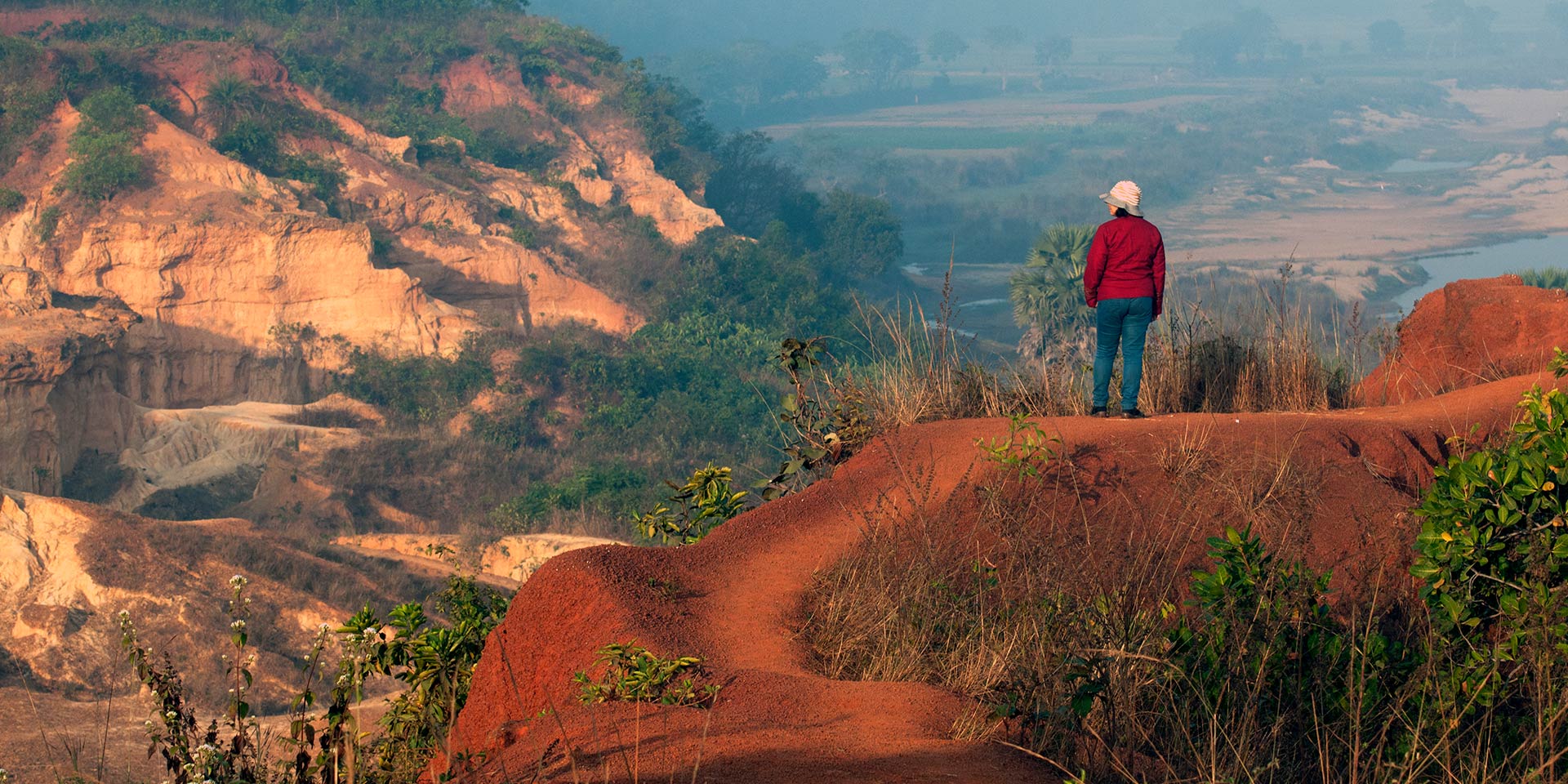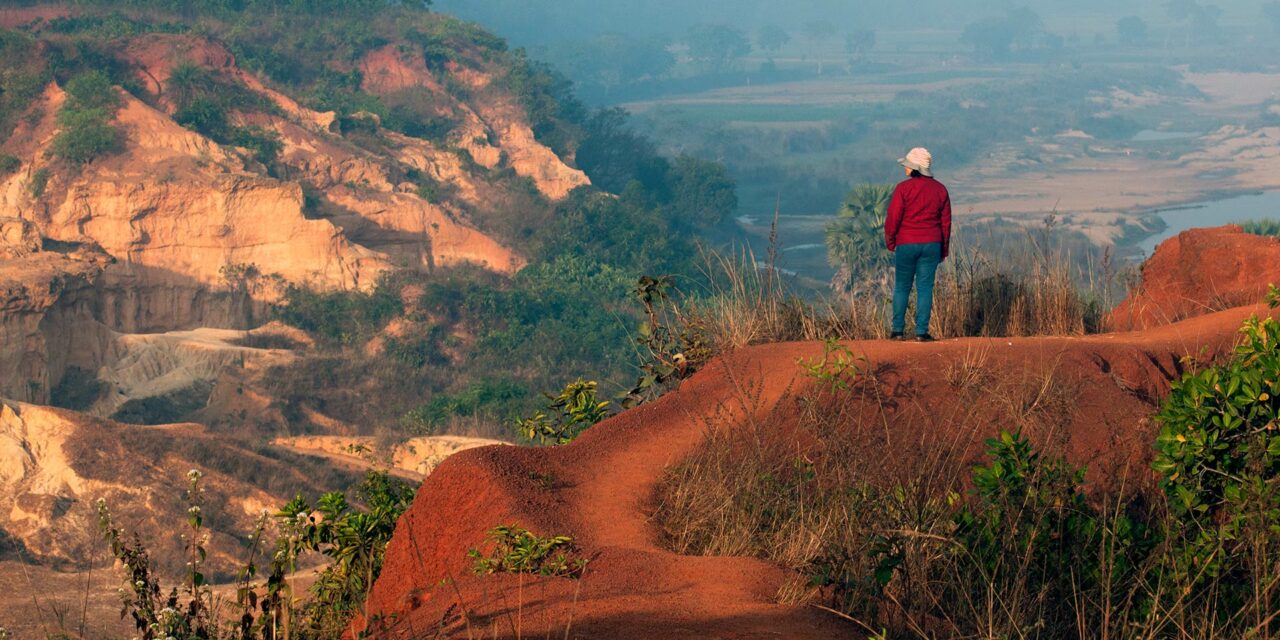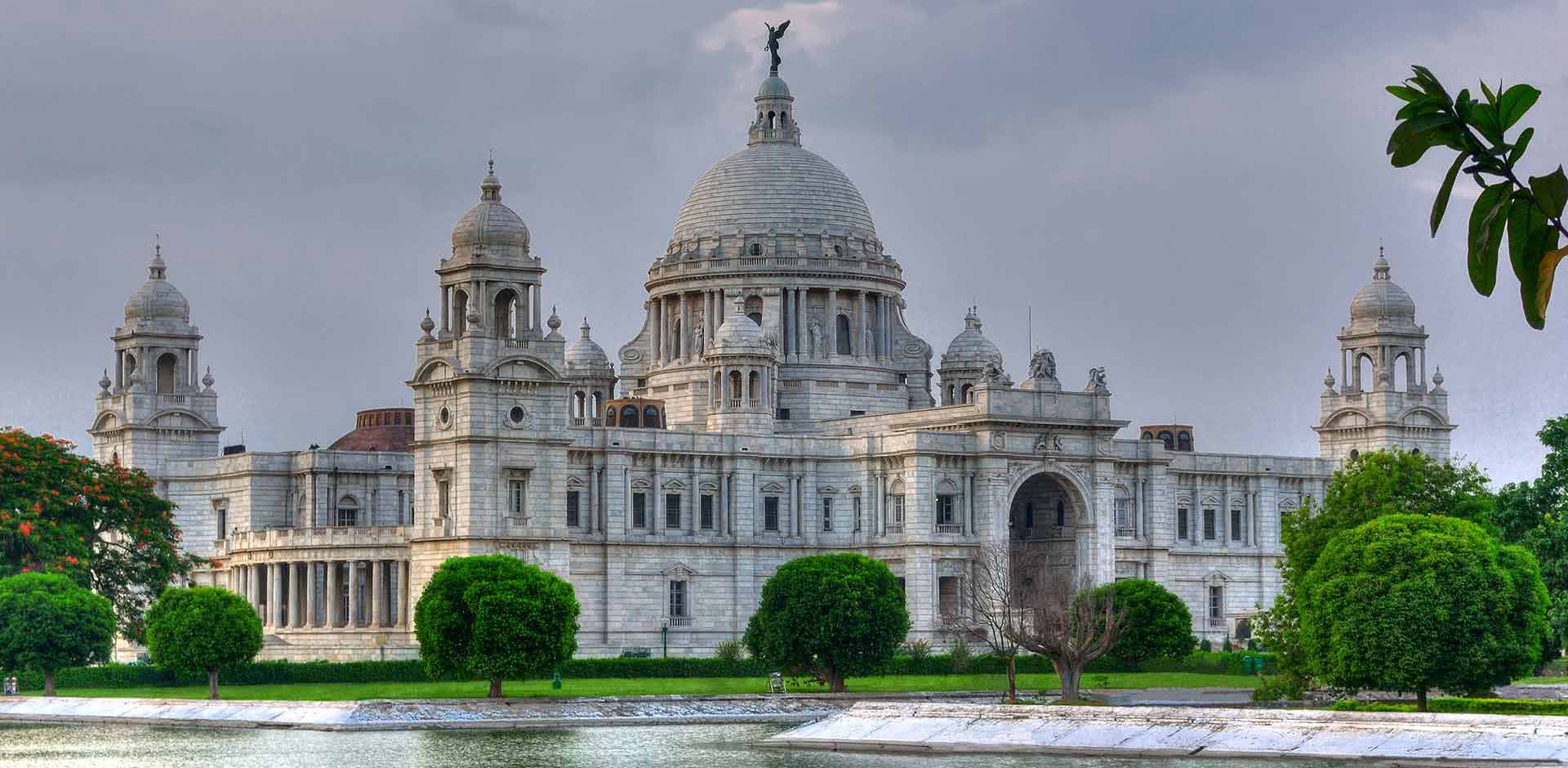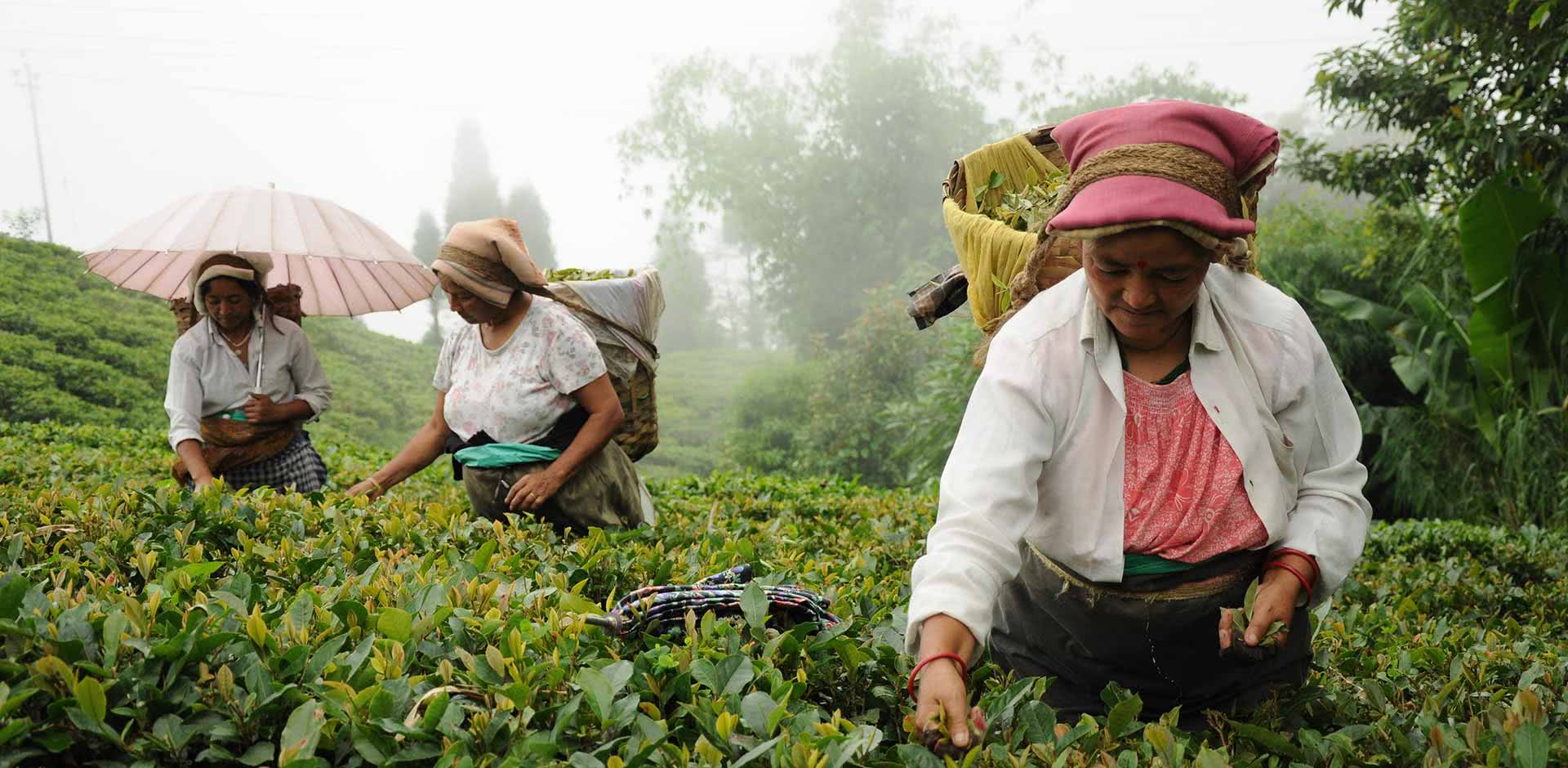The brownish patches of earth that lie on both sides of the highway look blank and sterile, and the sparse vegetation that dots this rather dreary landscape of West Bengal wears a wilted, wintry look – something you might see in a Wild West film. A four-hour drive from Calcutta took us to the small town of Chandrakona, a settlement that rose to prominence during the Mughal rule in the 16th and 17th centuries. Not much of the old glory remains, with the exception of some crumbling old mansions and a handful of terracotta temples in the forest-covered fringes of the town.
Leaving Chandrakona a little after six in a local car, we swerve onto a dirt track after about a half an hour and are flanked by sporadic clusters of cashew and acacia trees. A few minutes later the car heaves to a halt at a clearing: Gongoni Danga, roughly translated from Bengali, it means “red-hot land.”
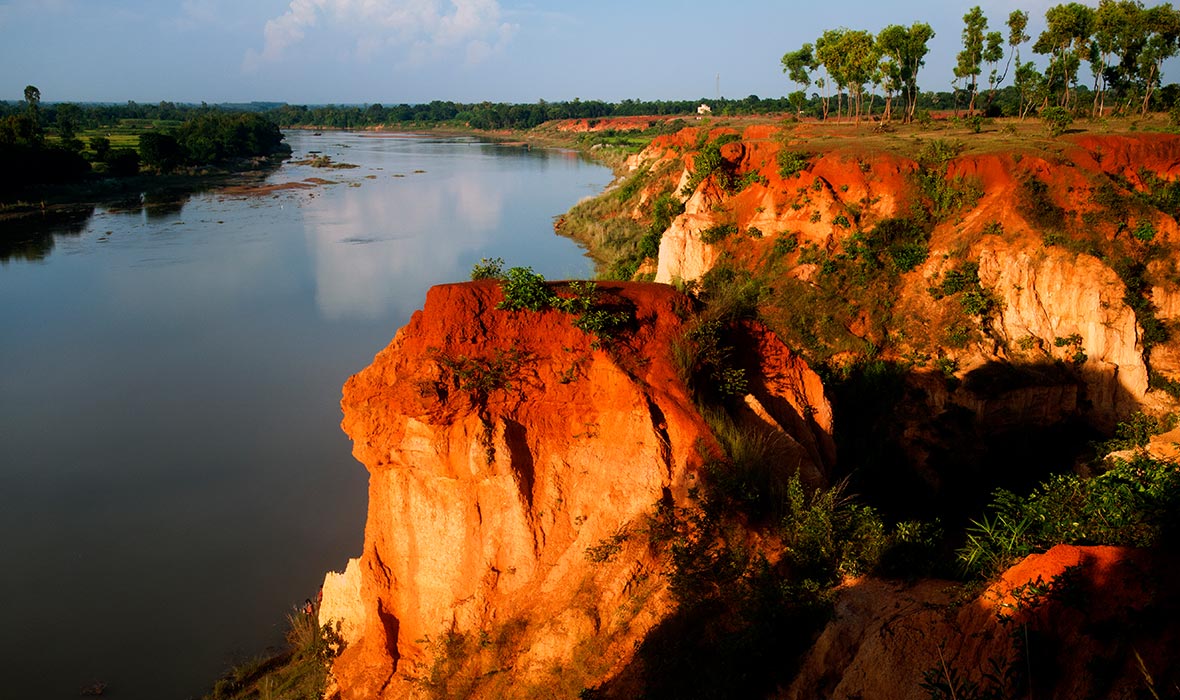
It looks not unlike the Western United States – from Calcutta to Arizona in just a few hours. A strip of red-rock land leads to a precarious drop to the valley below and a row of jagged cliffs of laterite; the crimson contours blushing with a warm glow in the morning sun. Below is the Silabati River threading its way through the canyon floor, floury-white sandbanks forming beautiful patterns on the river bed.
“In these dry months, the water is mostly knee-deep. But in monsoon the river often overflows into the recesses of the gorge,” our guide and driver Sadhan tells us. He leads the way to a staircase, built by the local municipality, which winds its way a little into the depths of Gongoni.
If the canyon looks magical from above, and from close quarters its myriad textures look almost surreal where wind and water have collaborated over millions of years to carve and chisel a craggy landscape.
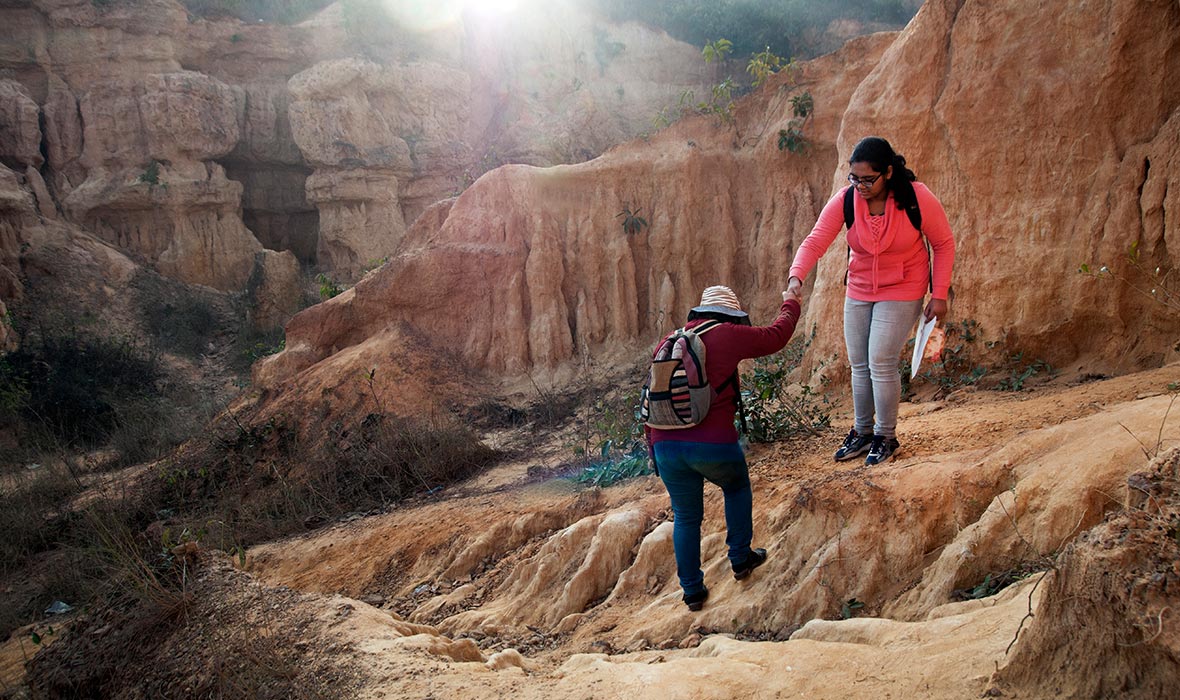
ABOVE: Hiking Gongoni Danga.
As we descend to the lower depths of the canyon, the colors begin to change. The rusty red gives way to various hues of yellow that range from a grainy pallid to brilliant gold. Geologists have confirmed that the upper part of the gorge consists of quaternary laterites which lends the rusty-red textures above the alternate sandstone-siltstone yellow in the lower levels that date back to the Tertiary Period.
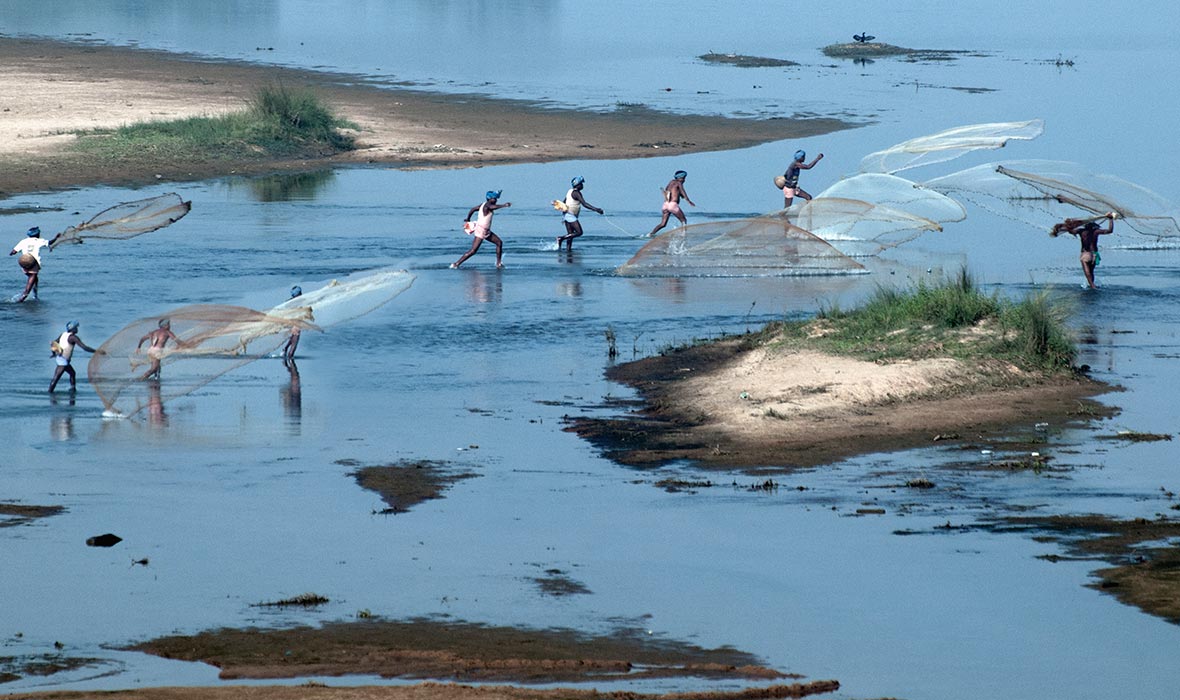
ABOVE: Fishermen with traditional nets.
The mid-morning sun filters in to light up the nooks and crannies of nature’s own eccentric canvases, randomly shaping bizarrely beautiful shapes and designs on the moldy rockfaces.
We explore the meandering trails inside Gongoni, the route through which the river carved a 70-ft gorge and finally arrives at the edge of Silabati. A group of fishermen wade through the ankle-deep river and throw their hand nets into its limpid waters.
“The nearby towns and villages get their fish from this river,” Sadhan tells us. “There are still no fisheries. They fish in small groups using these traditional nets.”
We retrace our path through the slopes, dotted with puzzling towers and ravines, pockmarked with crumbling caves. Sadhan points to a rather sinister-looking cave with carved pillars on its doorway, a little ways up on a ridge: Bakasura’s cave. As we spread out on the little clearing in front of the cliffside chamber, Sadhan recounts a story – an integral part of Gongoni’s past
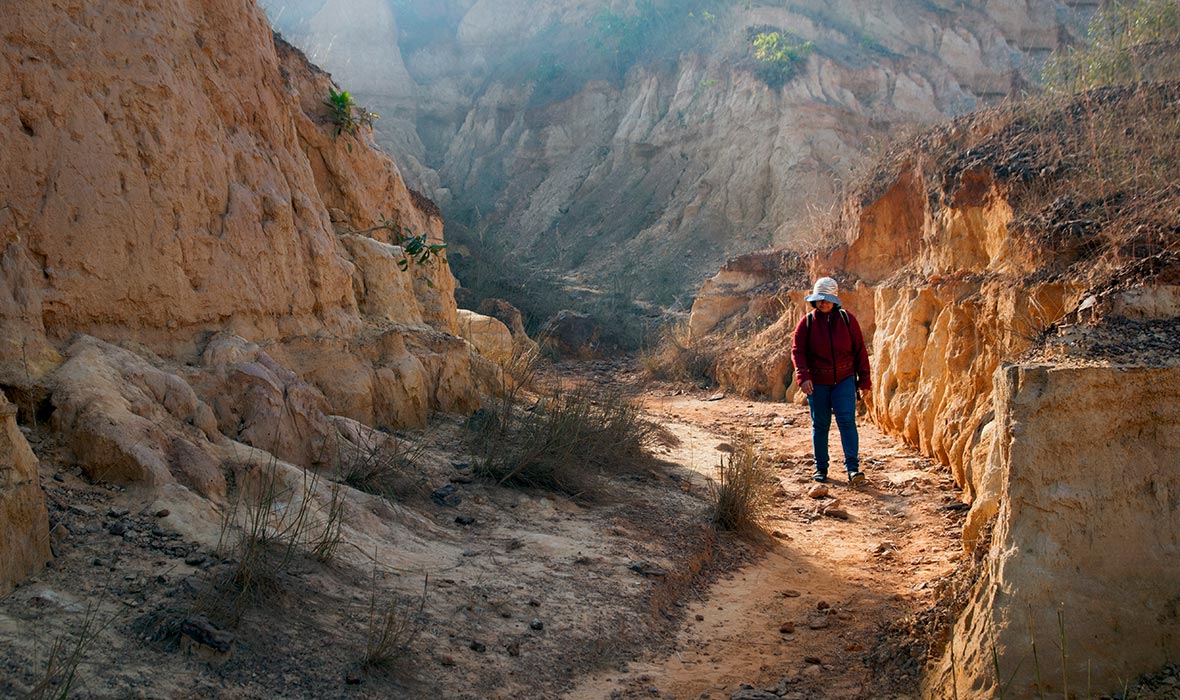
During the Mahabharata period and at a time when the Pandavas were traversing the country, five brothers arrived with their mother Kunti; it was a territory ruled and terrorized by Bakasura, a fearsome demon. His culinary routine followed a simple pattern: Each day a person from a nearby village had to go to the demon’s cave – in front of which we enjoyed a leisurely breakfast – as his daily dose of meat. The Pandavas were hosted by a local family whose turn it was to offer up a sacrifice. At Kunti’s behest, Bhima (the mighty second Pandava brother) gladly agreed to play the substitute. A vicious combat ensued and lasted for several days before the monster was killed by the middle Pandava.
“And that earth-rattling battle left the land all wrinkled and crumpled,” Sadhan says, finishing his story with an elaborate flourish of his hand at the surrounding terrain.

